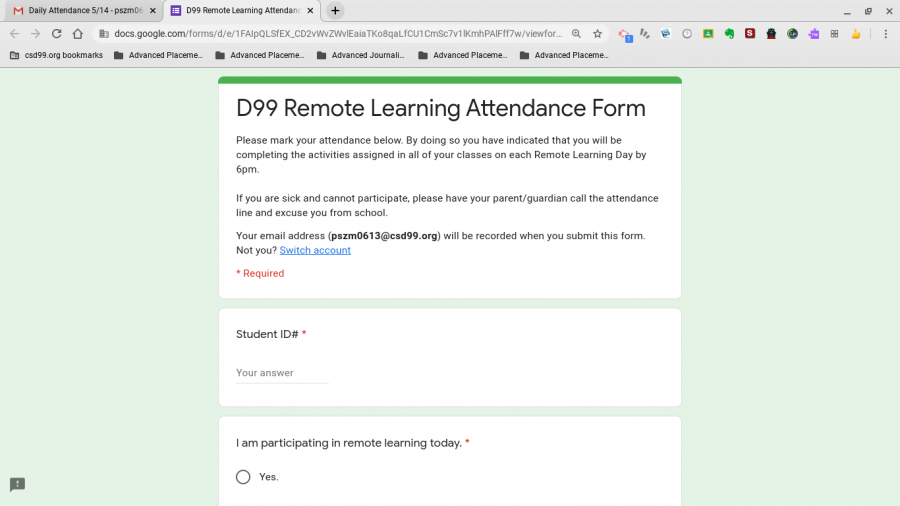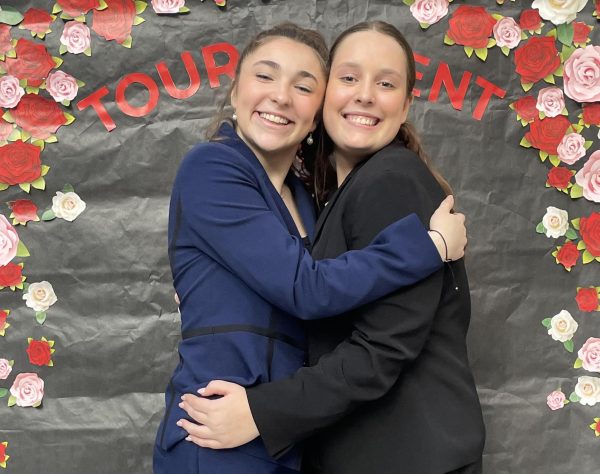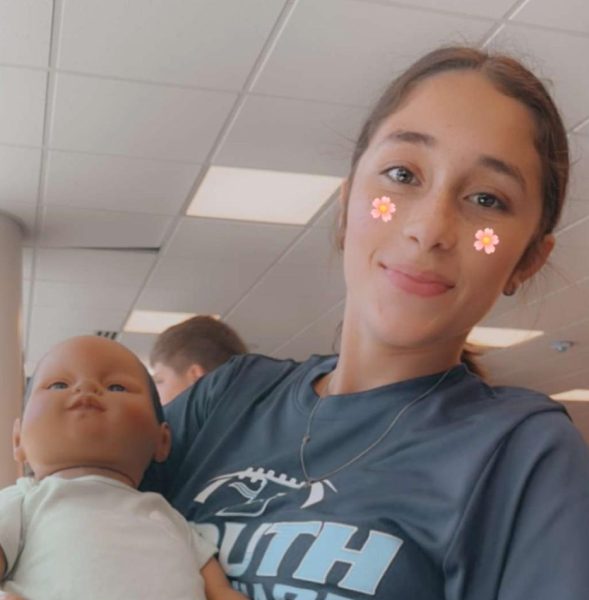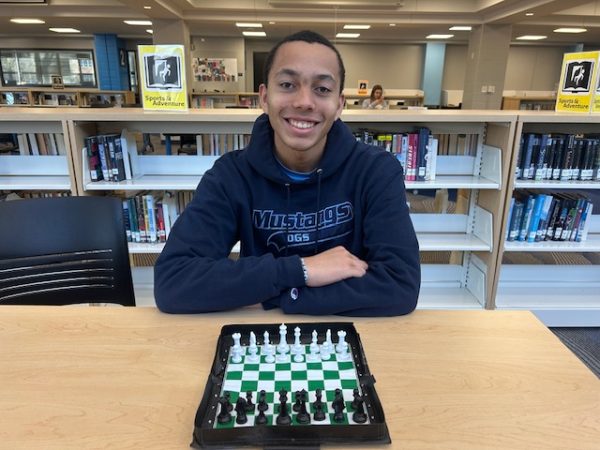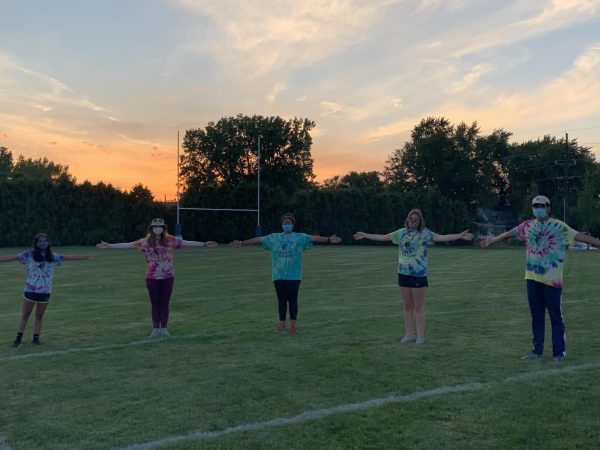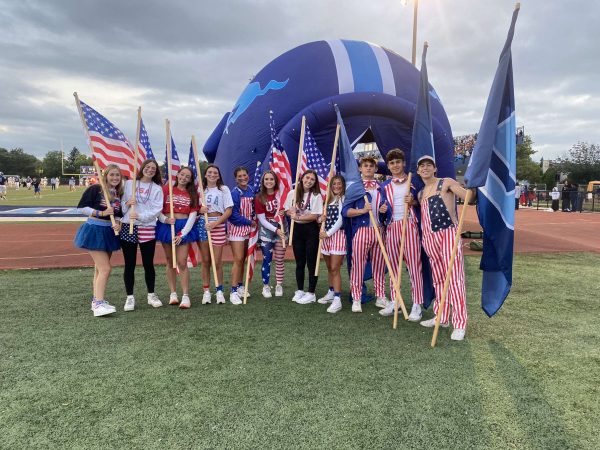On the other side of the Zoom screen: Teachers learn e-Learning
In addition to submitting a form released by Dr. Thiele, students also needed to confirm their attendance with each of their teachers.
From independent note-taking to Zoom meetings, the Coronavirus forced students to adopt a whole new way of learning. On the other end of this experience are the teachers who had to modify their thought-out lesson plans to not only fit the restrictions of e-Learning but also to keep students motivated to complete their work.
Social studies teacher Laura Rodey summed up the reality of the situation. “If the shut-down has taught me anything, it reminded me that there is no replacement for in-person learning,” Rodey said.
This means that lessons plans, prepared months in advance, now needed to be broken down to fundamental pieces. “I have really drilled down my assignments to the core learning that I want them to focus on. So, I had to cut a fair amount of content,” Rodey said.
Although some teachers learned to use the Zoom app to simulate in-person teaching, many students aren’t able to attend such discussions, and they don’t always reach out when they might need help.
Science teachers have a particularly tough time with this. Teaching chemistry, Jennifer Fischer often had to spend a lot of time explaining various difficult concepts in class, but this was no longer possible.
“So much of the process of uncovering and addressing student misconceptions in science is done through questioning and dialogue. That is much more difficult with remote learning,” Fischer said.
The foreign language department was uniquely affected by e-Learning. Foreign language department chair and Spanish teacher Tara Dellutri explained that students are no longer able to practice a tenet of language — speaking.
“We cannot assess as we usually do without compromising the integrity of the assessments … . As speaking is an important part of language learning, students have not had the amount of speaking practice as we would like them to have,” Dellutri said.
If the shut-down has taught me anything, it reminded me that there is no replacement for in-person learning.
— Laura Rodey
Physical education teachers had to majorly revamp their lessons, namely by dropping the “physical” aspect. Fitness teacher Tony Nevrly adapted his plans to trust that students are remaining physically active during quarantine.
“Even though we have these shelter-in-place days, we still understand that we have to have a routine related to physical fitness, to nutrition, to health, homework, sleep, those kinds of things,” Nevrly said.
The teachers’ creativity nonetheless shined through these times, and many educators found themselves using new tools and technologies they had never expected themselves to use. English teacher Lauren Mietelski found herself employing a variety of apps in her classroom.
“I have been using Flipgrid to have students respond to their reading as well as respond to each other. Both the teachers and students love to actually see each other during this remote learning, and this gives us a great opportunity,” Mietelski said.
Mietelski also held ‘graffiti discussions’ on Google Slides and live discussions on Google Meet.
Fischer admitted that she isn’t the most tech savvy teacher, but even she learned the ins and outs of Zoom, forming breakout sessions for students to work with each other. This is in addition to a number of video lectures she made.
“I have had to make a lot of changes to how I would normally teach. I had never made a screencast or video lecture before, so doing that was creative for me,” Fischer said.
In addition to creating a Google Classroom for the first time, math teacher Negin Voss produced video lectures and held live Zoom office hours for in-person help.
“E-Learning has been going fairly well, [but] I definitely miss interacting with my students and colleagues,” Voss said.
Still others tried different approaches.
“I’ve tried a bunch of new technologies — some have worked great and some not so much. For example, I learned EdPuzzle and have gotten some great feedback from students — though I hear that other students are getting a little sick of them since so many teachers are using it,” Rodey said.
All in all, the experience has provided plenty of ideas for the next school year.
“It has actually been really helpful for me to learn new things that I could possibly use when we are back in the classroom,” Rodey said.
Students are not the only kids that some teachers need to manage. Many have young children of their own, and this presented its own task.
“It is a bit challenging trying to balance home-life with my young sons and trying to create teaching material,” Voss said.
Fischer’s children have ‘Zoom-bombed’ her a couple of times while she was teaching class online. “[That is] probably my biggest challenge – balancing my time and responsibilities between my work and my own kids while they are trying to learn at home as well,” Fischer said.
In addition, teachers sometimes needed to contact their senior students more often than their other students and remind them to finish incomplete assignments so that they can graduate.
“The seniors have been hearing from me more often about their incomplete assignments because it is so important that they leave our district with the necessary skills to be successful … . However, they are less likely to reach out for help, so it is all about trying to get them engaged on our end. It has been a struggle to keep many of them going … ,” Mietelski said.
Many seniors feel a particular sense of disappointment regarding how the school year has ended, but teachers like Fischer remain optimistic.
“ I am sad that I won’t get to say goodbye in the manner I had hoped, but maybe when this all passes we will get to see each other once again,” Fischer said.


